What Are Delft Tiles? Your Guide to Their History and How to Use Them
Rich in history, delft tiles are the perfect way to add a hint of old-world style to your home.
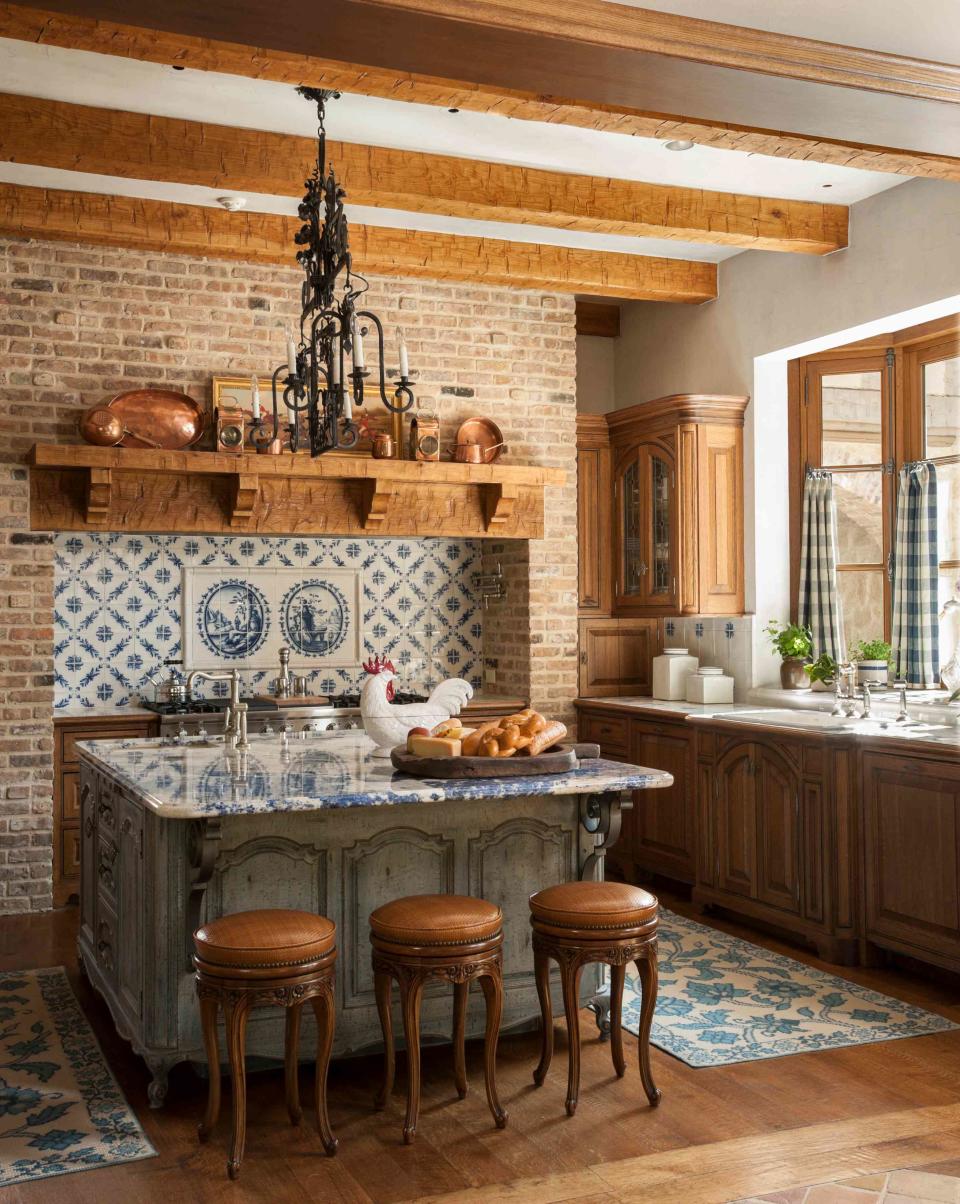
Jenny O'Connor
Delft tiles, which feature blue and white depictions of mythical creatures and agricultural scenes, are iconic in the home design world—and they’ve recently been making a comeback, complete with fresh colors and imaginative portraits. With cottagecore and vintage design styles increasingly popular, today’s designers and homeowners are looking to delft tile to incorporate a historic element into their homes.
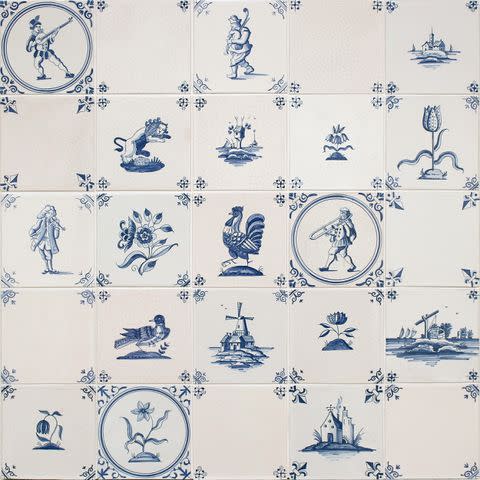
Courtesy of Douglas Watson Studio
What Are Delft Tiles?
While inspired by Chinese blue-and-white porcelain, delftware is actually earthenware, a type of ceramic. It is covered in a tin glaze, making the piece white, shiny, and opaque—the ideal background for delicate blue motifs. While some tiles are mass-printed with a design, delftware is usually hand-painted by an artisan. Realistic Dutch scenes as well as tall tales involving farms, flowers, ships at sea, mermen, and David and Goliath can be found on these tiles. Despite their artisan design, the tiles are easy to clean, which is why they're typically used in hardworking areas like kitchens and bathrooms.
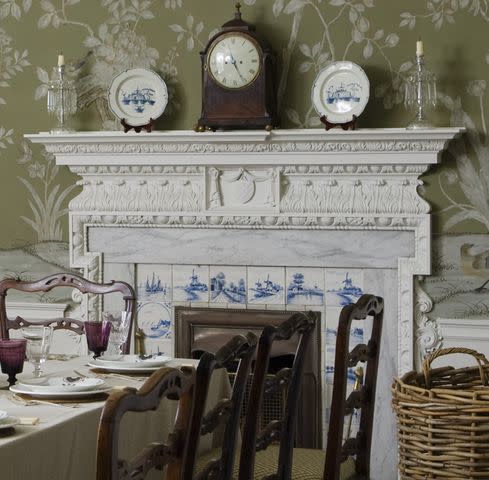
Courtesy of Douglas Watson Studio
Delft Tile History
With more than 400 years of rich history, delft tiles were first made in the early to mid-17th century in the city of Delft, Netherlands. After the invention of delft pottery, artisans used the same process of tin-glazed earthenware to create tiles adorned with personalized depictions, factory marks, and monograms.
The tiles were originally made to beautify dark and sooty fireplaces. The tiles were heat-resistant and easy to clean, plus had beautiful colors and designs to make a basic fireplace a focal point. Once Dutch homeowners saw how well the tiles worked for a fireplace, they were soon used all over the house as a charming water-resistant material. The trend eventually spread to Britain, but didn’t last long. Delftware production slowed to near extinction at the end of the 18th century. However, the use of the tiles is back and more personalized than ever, with hundreds of artisans making custom delft tiles for homeowners across the world.
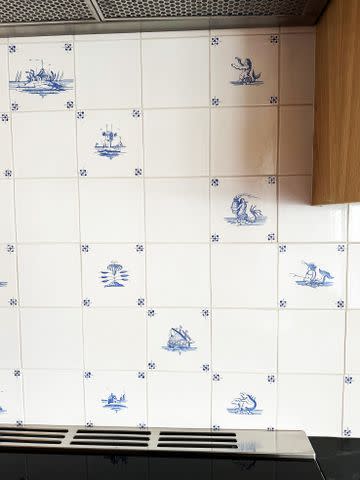
Stephen Orr
How to Use Delft Tile
Delft tile remains stunning around a fireplace, on a kitchen backsplash, in a shower, or even covering an entire room. Or place them strategically to form a mural of any size and subject you choose.
When deciding how to use delft tiles in your own home, explore the portraits, corner ornaments, and motifs that are already available, or look into getting them custom-made. Take inspiration from delft tile designers' websites, magazines, or social media, as there are countless ways to use and arrange them.
Once you have your tiles, arrange them in various ways on the floor or a countertop to see what they will look like once installed. Better yet, draw your vision out before purchasing. Blank tiles are also available to create space between designs if desired. Better Homes & Gardens editor-in-chief Stephen Orr suggests purchasing plain delft tiles from the same company you purchase your blue and white designs so that the thickness is uniform across your project.
When renovating his Cape Cod home, which was built circa 1750-1780, Orr opted to use delft tiles in his kitchen backsplash behind a range, as well as in the galley across from it. “The kitchen had been gutted and renovated poorly multiple times. My husband and I wanted to find a way to incorporate history back into the house,” he says.
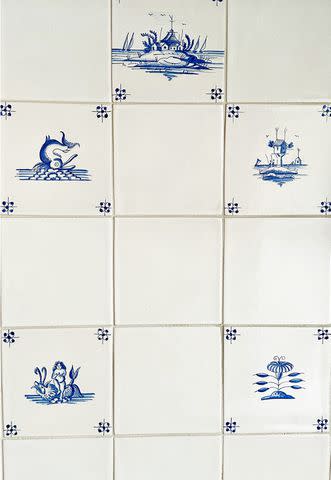
Stephen Orr
Orr aimed to pay homage to the English settlers who would have once called his house home. Before the renovation, he researched examples of historic and present English design and noticed delft tiles throughout.
“Our house would have been lived in by English people in the 1750s and 1780s, who would have been coming over in the period when delft tiles would have been popular in England,” he says. “The tiles helped us ground the modern kitchen with history.”
Orr chose his delft tiles from a marine collection of English tile company Douglas Watson. The designs are far from serious but brighten a room and tie in an imagined history. “I wanted them to be quirky and fun, too, so I have a lot of sea creatures and mermaids, Neptune figures, a little kid holding fish, a person clamming, anything I could find—shots of boats, shots of islands with boats with funny little huts on them. I just tried to find a range of 20 of them that are nautically themed.”
Where to Find Them
Suppliers from all over the world produce these beautiful tiles, whether a part of an existing collection or custom-made. Here are a few to get your search started.
How to Install and Maintain Delft Tiles
After you’ve planned your layout, it’s time to install the tiles. It's recommended to use a lime-based mortar when installing delft tiles, as it will keep them sturdy to the wall but also prevent damage to the tiles if they are ever removed. Use grout in a color similar to the tile or in a darker shade to create contrast. The grout lines should be made no wider than 1-2 mm.
The tiles can be cleaned with a damp washcloth and gentle pH-neutral cleaner, followed by a dry cloth to remove moisture. For grime on grout lines, a toothbrush works well. To bring back a lustrous shine, buff the tiles with a dry cotton cloth. Be sure to avoid excess moisture, as it can cause salt crystal growth, which causes the glaze to separate from the tile.
Modern Twists on a Classic
Today's delft tiles present fresh takes on the original design. British designer and homewares brand Petra Palumbo uses a variety of colors in its handcrafted delft tiles. The palette includes blue, green, manganese, red, sepia, and, coming this fall, mustard. Their many eccentric designs include umbrellas, rubber ducks, and shaving brushes, while the bespoke service allows for any motif or illustration of choice. Mix and match colors and designs to create a truly one-of-a-kind design at home.
"My tiles have a universal appeal because anyone can apply the designs to their lives. I’m deeply sentimental, so I’m always trying to capture and commemorate happy memories for loved ones," Palumbo says. “Tiles elevate any space without massive upheaval. I sometimes use grout in tonal or contrasting colors to make them pop and emphasize the characterful, irregular edges."
For more Better Homes & Gardens news, make sure to sign up for our newsletter!
Read the original article on Better Homes & Gardens.

